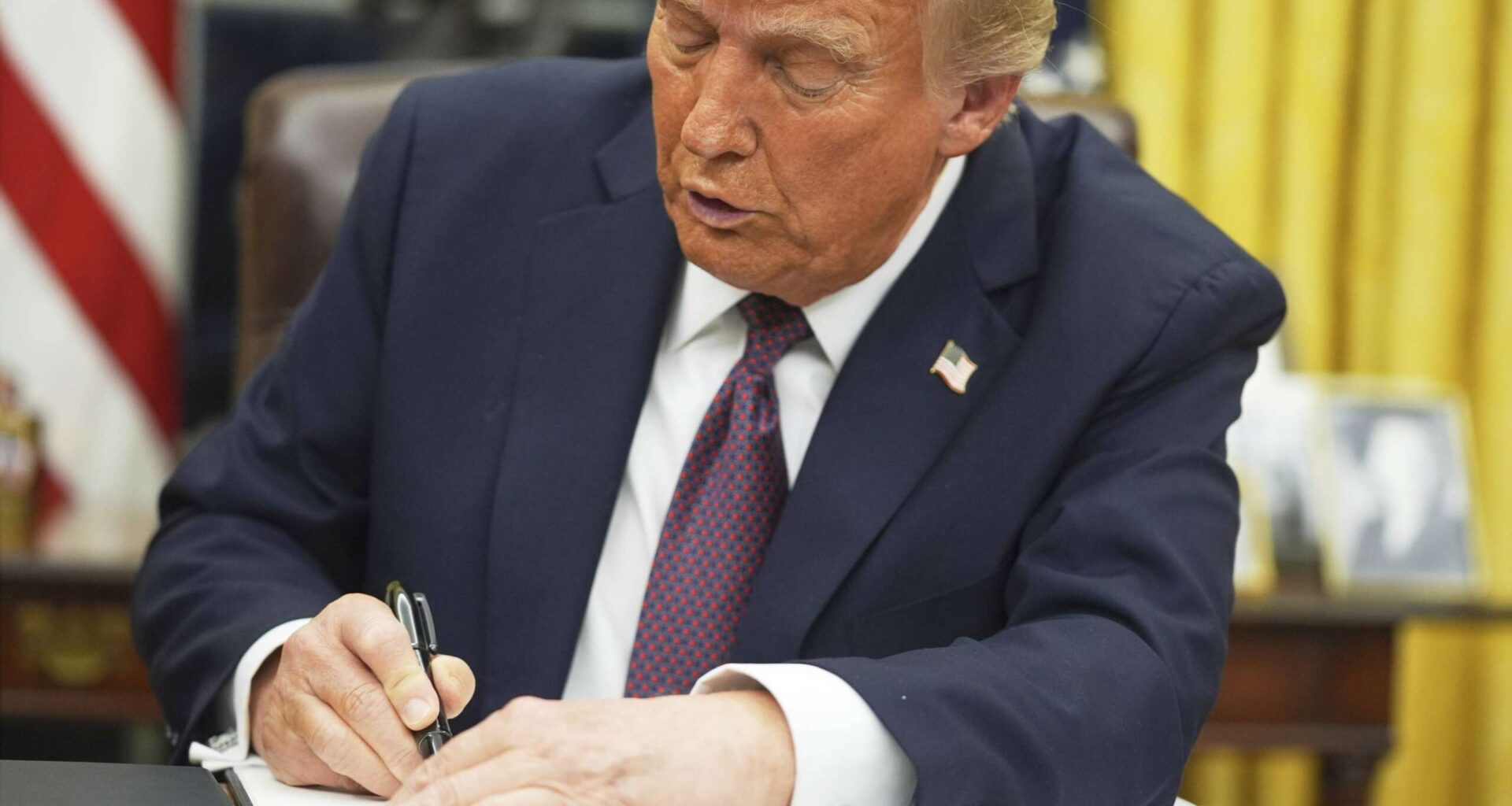The Trump administration is seeking a refresh in how the federal government designs public-facing services.
President Donald Trump launched a new National Design Studio within the White House, as part of an executive order he signed Thursday.
The executive order tasks a National Design Studio within the White House with “breathing new life into the design of sites where people interface with their government.”
“It is the policy of my administration to deliver digital and physical experiences that are both beautiful and efficient, improving the quality of life for our nation,” Trump wrote.
]]>
The National Design Studio will direct agencies on how to reduce costs and standardize website design, in order to “dramatically improve the quality of experiences offered to the American public.”
The executive order gives agencies until July 4, 2026, to implement this “America by Design” agenda and to produce initial results. That’s the same date that the Department of Government Efficiency’s “temporary organization” is scheduled to disband.
The National Design Studio is also set up as a temporary organization, and will expire after three years.
A chief design officer will lead the National Design Studio, and focus on making public-facing customer experiences across the federal government “beautiful and efficient.” The chief design officer will report to the White House chief of staff.
The executive order calls the chief design officer to recruit “top private-sector designers to facilitate this effort.” Many experts who worked on customer experience and design projects left the government or were fired under the Trump administration.
The U.S. DOGE Service, formerly the U.S. Digital Service, removed about 50 of its 200 employees in February.
The General Services Administration shuttered its 18F tech shop in February. Former 18F employees, in an ongoing lawsuit, claim they were “unlawfully targeted” by DOGE and its former leader Elon Musk.
]]>
The executive order calls on GSA to update its U.S. Web Design System, a set of standards to ensure federal websites have a consistent look and feel.
The White House says less than 20% of federal websites use code from USWDS, “contributing to inconsistent and varying user experiences.”
The administration is also demanding governmentwide compliance with the 21st Century Integrated Digital Experience Act (IDEA).
The legislation, signed into law under the first Trump administration, required agencies to move more of their public-facing services online, make federal websites more mobile-friendly and accept electronic signatures, to help wean agencies off paper-based processes.
Lee Becker, former chief of staff of Veterans Experience Office at the Department of Veterans Affairs, now the senior vice president and executive advisor for public sector and health care at Medallia, said the executive order is an “additional step” to scale up changes that led to higher veteran trust scores at the VA.
“This is about turning customer experience feedback into fuel using customer insights, modern tools, and design thinking to ensure every government service works better, faster, and with greater trust,” Becker said.
A White House fact sheet states federal websites and digital services “aren’t meeting the public’s needs and expectations,” and that legacy government systems are costly to maintain.
“The current sprawling ecosystem of federal services lacks the usability and aesthetic quality expected by the American public,” the White House wrote.
Only 6% of federal websites are rated “good” for use on mobile devices, and 45% of federal websites are not mobile-friendly.
]]>
The White House estimates there are more than 26,000 federal websites.
Federal News Network first reported that the 24 largest federal agencies are preparing to eliminate more than 330 websites — about 5% of the more than 7,200 websites they maintain.
Under the Biden administration, the Office of Management and Budget directed agencies to take a “digital-first” approach to improving customer experience.
The VA has made significant strides in consolidating its online presence. Deputy Chief Veterans Experience Officer Barbara Morton said in a recent interview that the VA in 2018 consolidated several of its websites into one site, VA.gov.
Morton said the VA consolidated its digital footprint, based on feedback from veterans who had to navigate several websites to track down the services they were seeking.
“We had lots of front doors, and it was incredibly confusing,” said in a recent interview. “Veterans said, ‘We think VA.gov is where we’d go, if we didn’t know where to go.’”
Copyright
© 2025 Federal News Network. All rights reserved. This website is not intended for users located within the European Economic Area.
